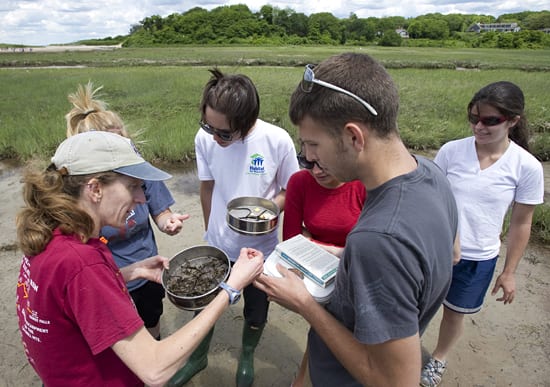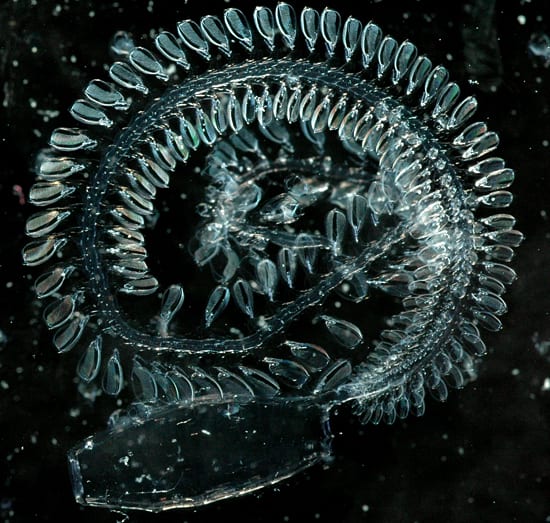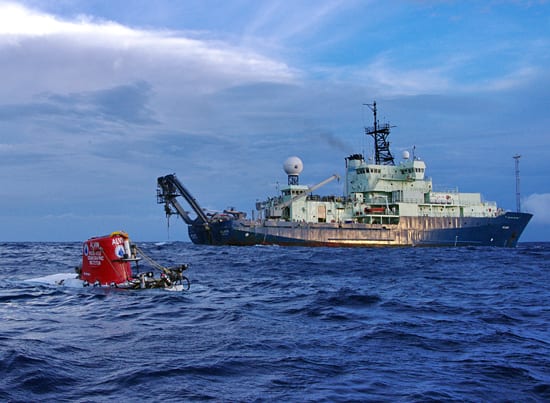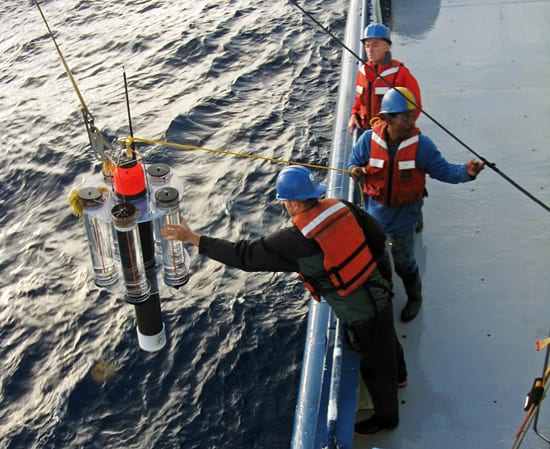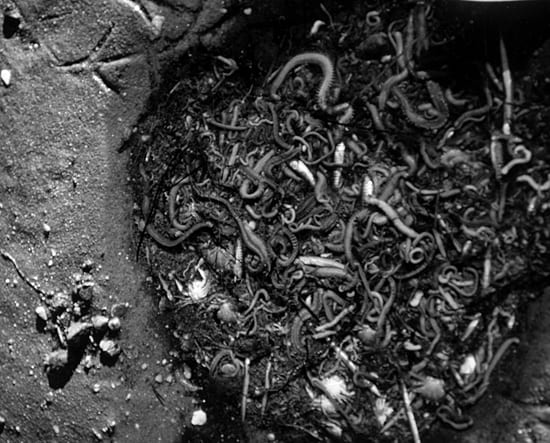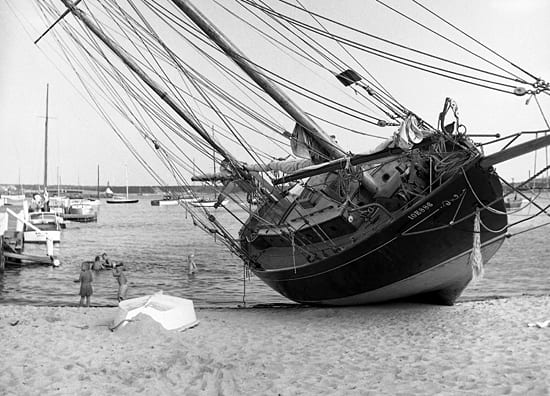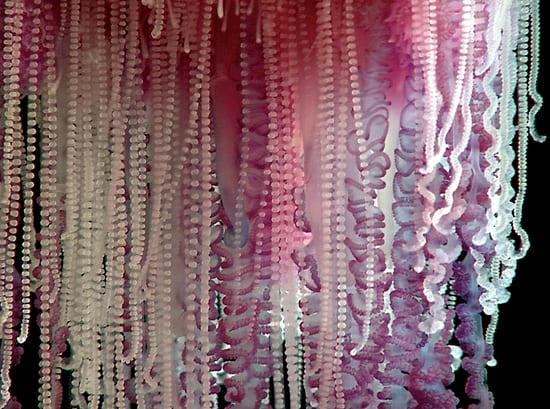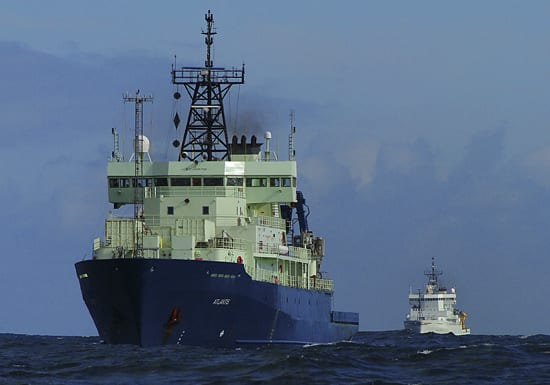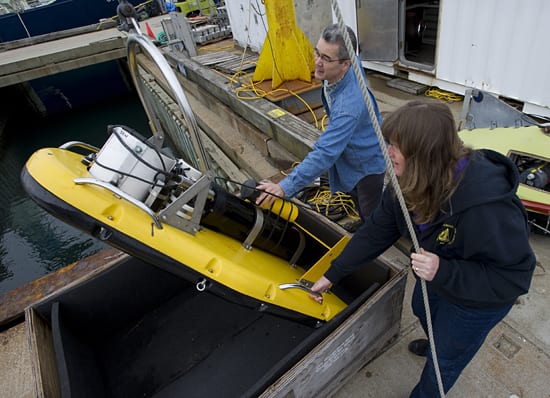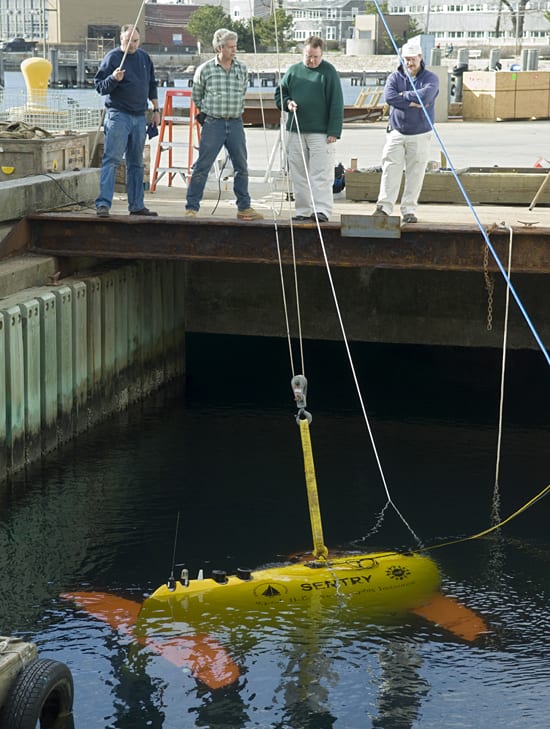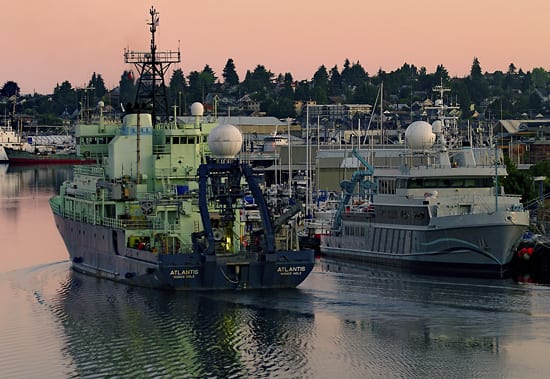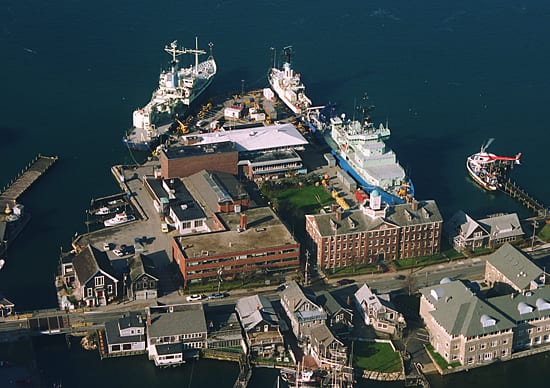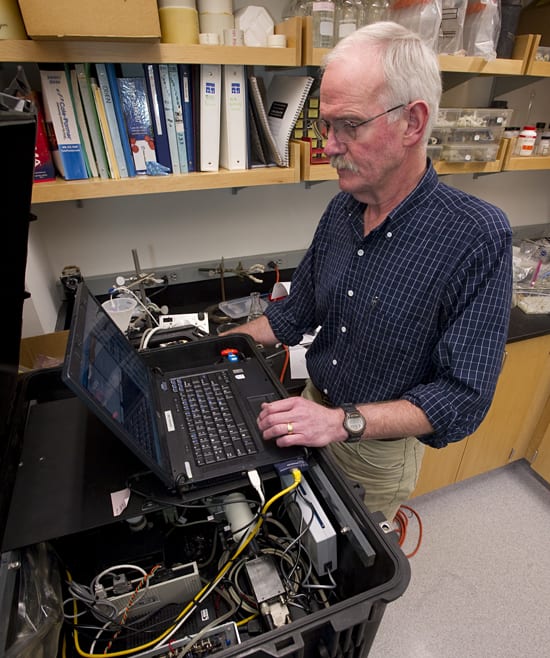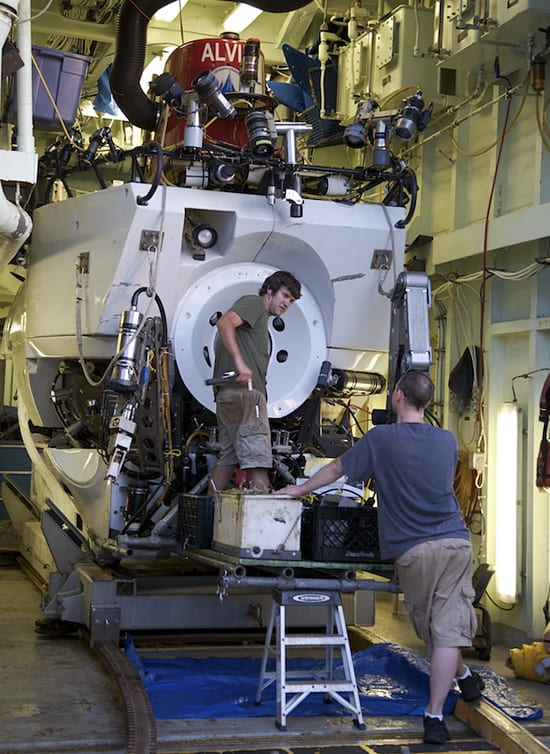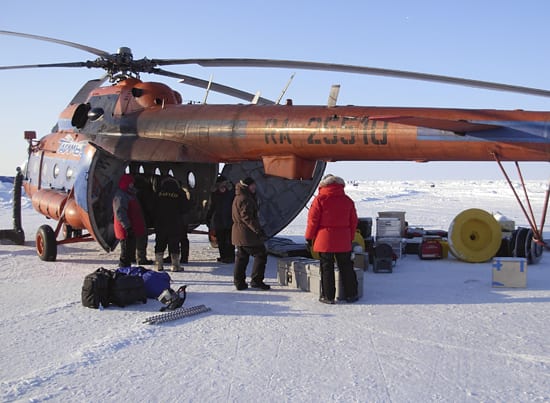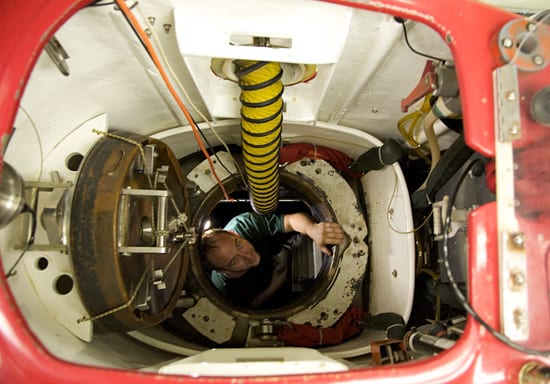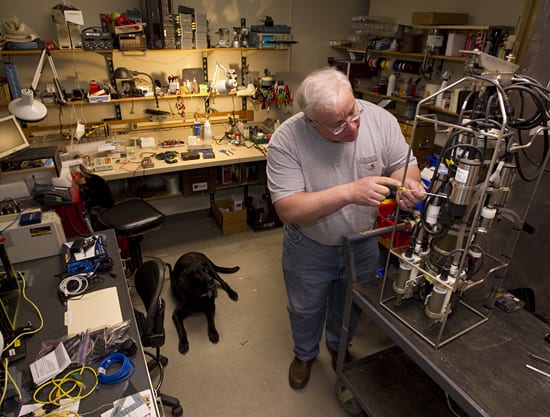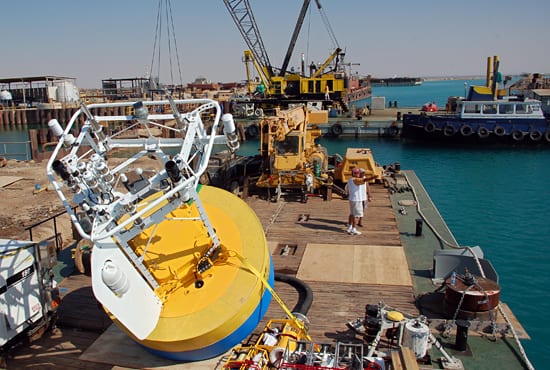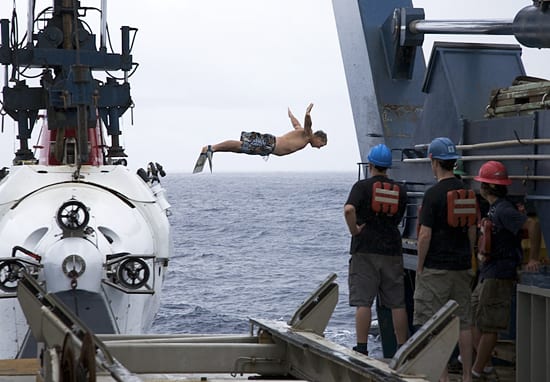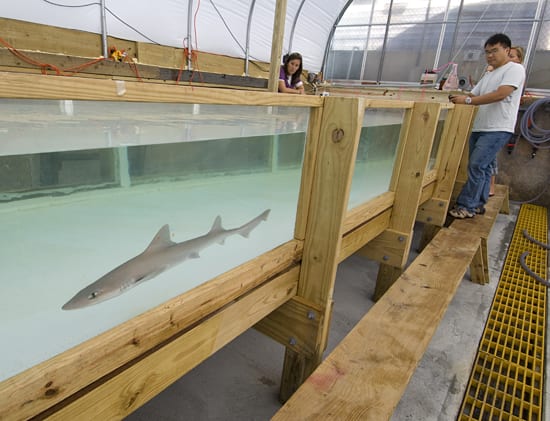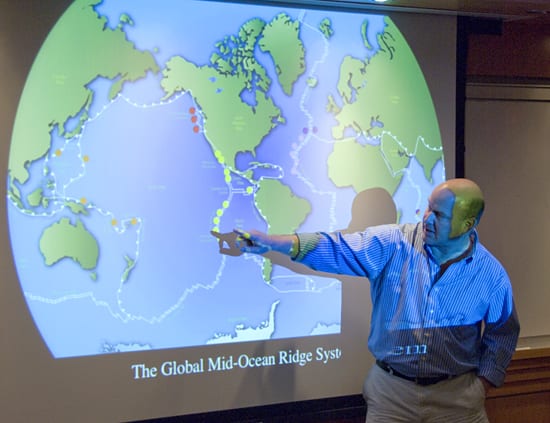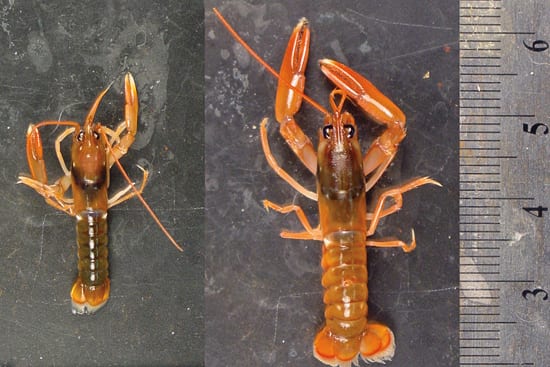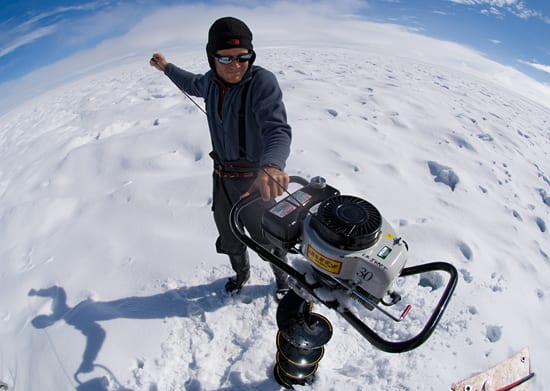Multimedia Items
Panning for worms
Research specialist Stace Beaulieu (at left), Summer Student Fellow Eric Rozell, and other students examine invertebrates they sieved from the sand and sediments in the tidal channel at Woodneck Beach…
Read MoreMaking ocean life count
Dolioletta gegenbauri, a planktonic colonial tunicate that filters phytoplankton to eat, is about two inches (5 centimeters) long. This species was one of many collected in deep water during a Census of…
Read MoreFeeling GRUVEE
The Human Occupied Vehicle Alvin and the R/V Atlantis work in the waters off Galapagos Islands in April 2010 during the Galapagos Ridge Undersea Volcanic Eruptions Expedition (GRUVEE). A team…
Read MoreCatching ‘snow’ in the ‘twilight zone’
Clindor Cacho of WHOI (middle), and Brad Issler (left) and Stephen Bell (right) from the Bermuda Institute of Ocean Sciences, recover a Neutrally Buoyant Sediment Trap (NBST) after a mission…
Read MoreOily tidal pools
Oil washed into the West Falmouth marsh and tide pools after a 1969 spill, with disastrous consequences for these small marine animals in a tidal pool. Though the marsh now…
Read MoreBeached
A boat lies on a beach in Vineyard Haven Harbor after Hurricane Carol, a category 3 storm, hit the New England coast in August 1954. Hurricane season in the Atlantic…
Read MorePrep time
Brian Hogue, an engineering assistant with the Sub-Surface Mooring Operations Group, performs a pre-deployment check on a Vector Averaging Current Meter (VACM) in preparation for a September 2010 cruise. The…
Read MoreDangerous beads
It looks like a curtain of Mardi Gras beads hung in a doorway, but fish should choose another door! These are a Physalia’s (Man-o’-War jelly’s) tentacles hanging beneath its ship-shaped…
Read MoreFancy meeting you here
Research vessel Atlantis, which is operated by WHOI, and R/V Thomas G. Thompson, which is operated by the University of Washington, became neighbors for a short time during the late…
Read MoreReady for action
WHOI scientist Tim Stanton and research associate Cynthia Sellers return a broadband imaging sonar to its storage box after putting it through its paces in the test well on the…
Read MoreChemical-sniffing bloodhound
WHOI engineers and scientists (from left to right) Andy Billings, Rod Catanach, Chris German, and Al Deuster test the autonomous underwater vehicle (AUV) Sentry off the dock in 2008. With…
Read MoreShips passing in the night
The Research Vessel Atlantis leaves port in Lake Union, Seattle, en route to Victoria, Canada. The ship on the right, M/V Alucia, was originally the Institut français de recherche pour…
Read MoreRare triple junction
Arrayed around the WHOI dock in Woods Hole, Mass. are the three ocean-going research vessels WHOI operates—(clockwise) Knorr, Oceanus, and Atlantis. The ships are part of the U.S. research fleet,…
Read MoreSafer drinking water
WHOI Biologist Scott Gallager leads a team developing a new tool to keep drinking water safe, by watching how single-celled organisms (protozoans) react to toxins in the water. Toxins typically…
Read MoreAlvin turnaround
DSV (Deep Submergence Vehicle) Alvin dives to the sea floor almost every day of the year in the service of ocean science. In the relatively few hours between dives, a…
Read MoreObserving the Arctic
Arctic climate research takes extra effort from people and instruments alike. In April 2010 WHOI engineers Jeff Pietro and Kris Newhall loaded buoys specially designed for the ice onto a…
Read MoreUp the hatch!
Somewhere in the tropical Pacific, DSV Alvin crew member Jeff McDonald emerges from the sub’s hatch, after giving an orientation to a future scientist-observer. Alvin holds three, a pilot and…
Read MoreTinkerer, sailor, real-time data guy
Under the watchful gaze of his dog Little Bear, engineer Marshall Swartz adjusts an instrument in his lab at Woods Hole Oceanographic Institution (WHOI). Swartz recently discovered a way to…
Read MoreMooring maneuver
WHOI Upper Ocean Proccesses Group engineers John Kemp, Jim Ryder, Paul Bouchard, and Jason Smith, and scientist Tom Farrar went to the Red Sea in November 2009 to recover and…
Read MoreDiving dismount
RV Atlantis steward Carl Wood dives back into the ocean after securing the lifting lines used to recover the human occupied vehicle (HOV) Alvin. Known for his graceful exits, Carl…
Read MoreSniffing out prey
A smooth dogfish shark (Mustelus canis) — a small species, fairly common in waters off New England — swims in the newly-built testing flume located in the Environmental Systems Lab…
Read MoreWhere in the world?
Where in the world is Tim Shank? One of WHOI’s most peripatetic scientists, biologist Shank points to some of his research sites. He studies the evolution and linkages of animals…
Read MoreLobster surprise
Post-doc Justin Ries—now at UNC—along with WHOI scientists Anne Cohen and Dan McCorkle grew shell-building ocean animals in water under air containing different levels of carbon dioxide, a greenhouse gas…
Read MoreFire it up
In July 2008, a team of four scientists from the Woods Hole Oceanographic Institution and the University of Washington returned to Greenland for their third year to learn how the…
Read More
